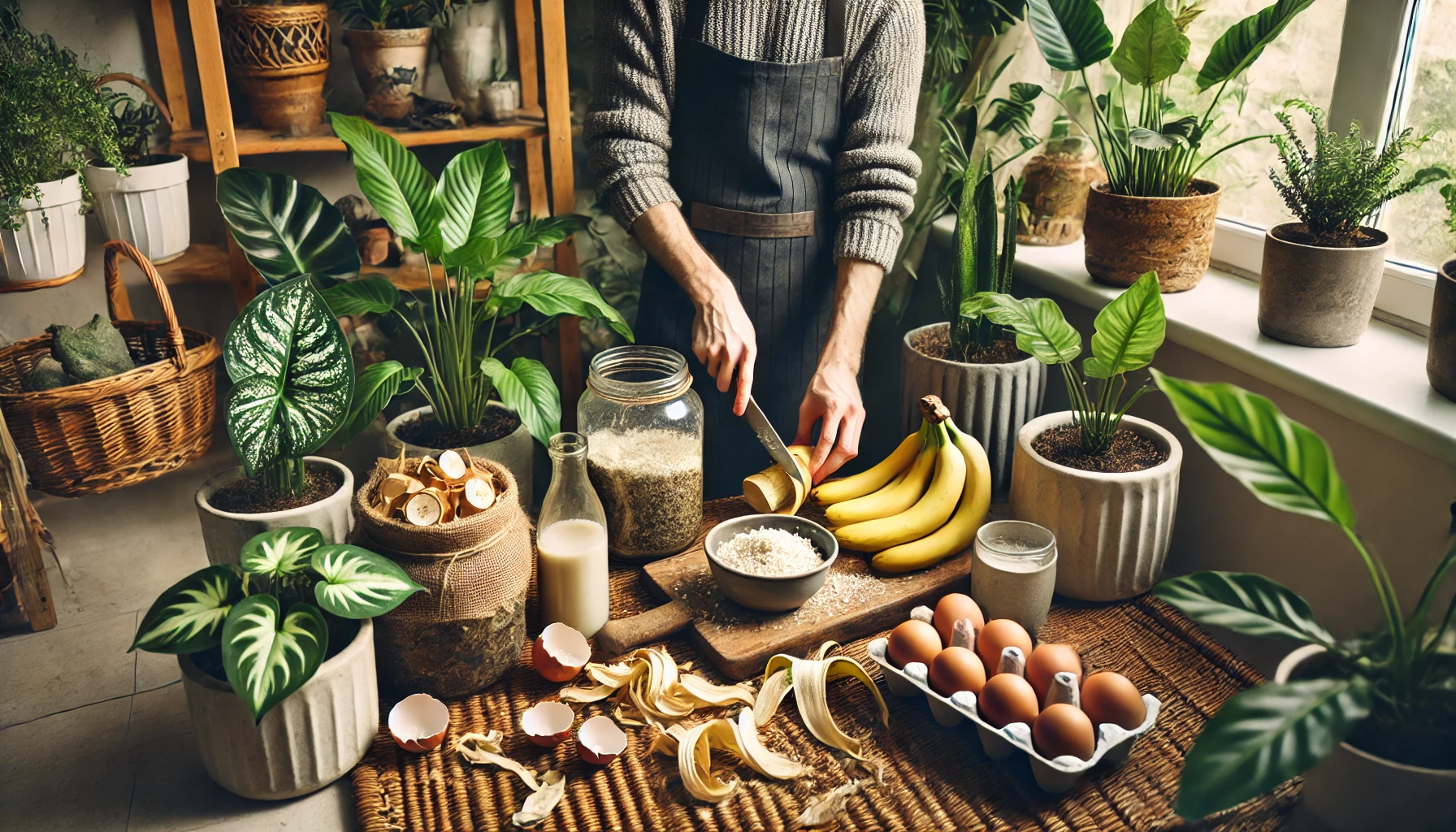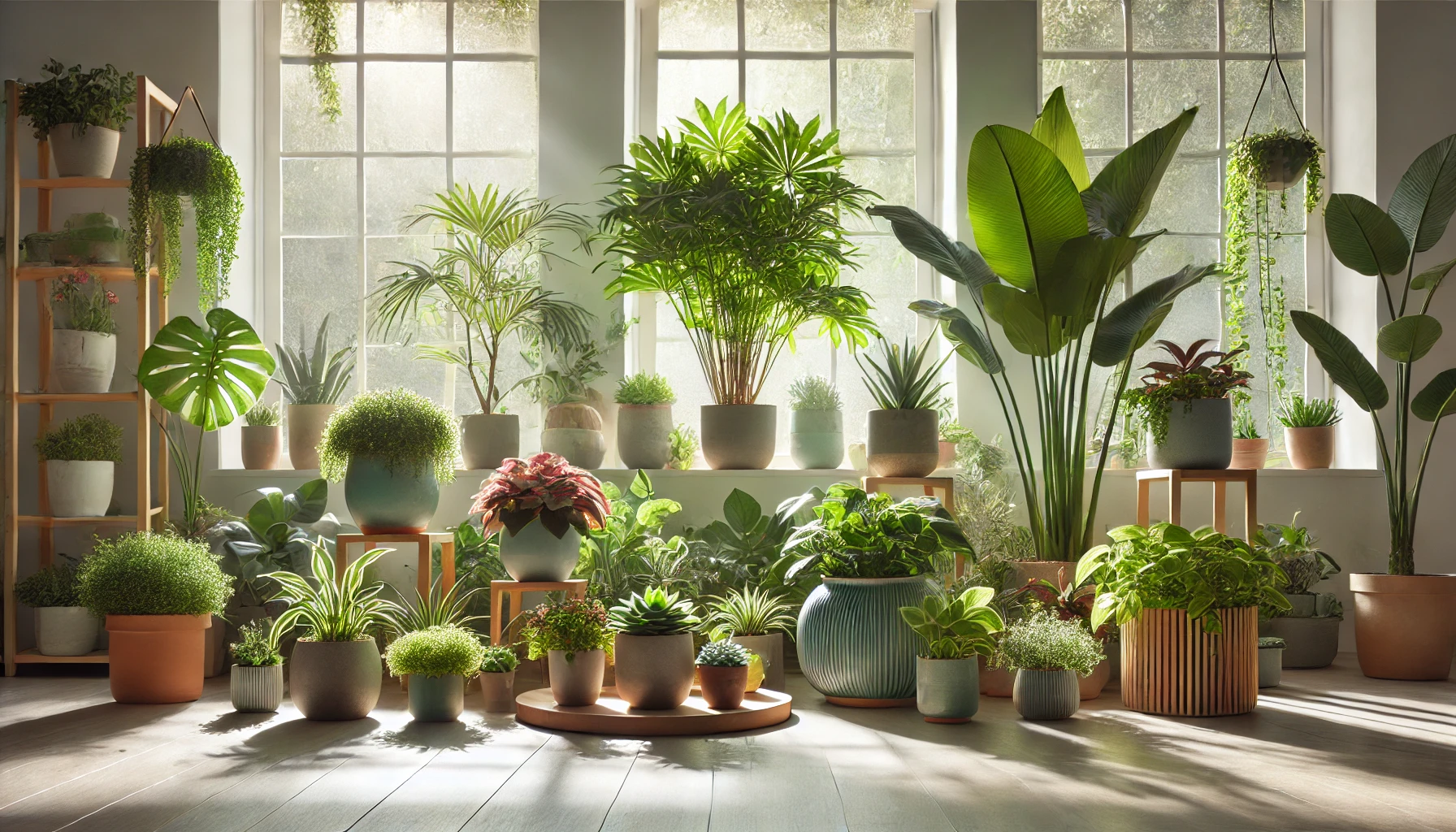Keeping your plants healthy and thriving doesn’t always require store-bought fertilizers. Homemade fertilizers are an eco-friendly and cost-effective way to nourish your plants using ingredients you likely already have at home. This guide will introduce you to natural fertilizers, how to prepare them, and when to use them for the best results.
Why Use Homemade Fertilizers?
Homemade fertilizers are packed with essential nutrients, such as nitrogen, phosphorus, and potassium, that promote plant growth. Additionally, they:
- Reduce waste by repurposing kitchen scraps.
- Avoid harmful chemicals, making them safe for the environment.
- Save money compared to commercial alternatives.
Essential Nutrients for Plant Growth
Understanding your plant’s nutritional needs will help you select the best homemade fertilizer.
- Nitrogen (N): Promotes lush, green foliage. Found in coffee grounds and grass clippings.
- Phosphorus (P): Strengthens roots and supports flowering. Found in banana peels and bone meal.
- Potassium (K): Enhances overall plant health and disease resistance. Found in wood ash and compost.
Easy Homemade Fertilizer Recipes
1. Banana Peel Fertilizer
Bananas are rich in potassium and phosphorus, making their peels an excellent natural fertilizer.
How to Use:
- Chop banana peels into small pieces and bury them near the base of your plants.
- Alternatively, soak peels in water for 24–48 hours to create a nutrient-rich liquid fertilizer.
2. Eggshell Fertilizer
Eggshells are an excellent source of calcium, which strengthens cell walls and prevents issues like blossom end rot.
How to Use:
- Crush eggshells into a fine powder and mix them into the soil.
- Add crushed shells to your compost for a slow-release calcium boost.
3. Coffee Grounds
Coffee grounds are rich in nitrogen, making them ideal for leafy plants.
How to Use:
- Sprinkle used coffee grounds over the soil.
- Mix them into compost to balance their acidity.
Note: Use coffee grounds sparingly, as excessive amounts can make the soil too acidic.
4. Compost Tea
Compost tea is a nutrient-dense liquid fertilizer made by steeping compost in water.
How to Make:
- Fill a bucket with water and add a few handfuls of compost.
- Let it steep for 24–48 hours, stirring occasionally.
- Strain the liquid and use it to water your plants.
5. Grass Clippings
Fresh grass clippings are high in nitrogen and perfect for outdoor plants.
How to Use:
- Spread a thin layer of grass clippings around the base of your plants as mulch.
- Avoid piling clippings too high to prevent mold.
6. Wood Ash
Wood ash is an excellent source of potassium and calcium, ideal for flowering and fruiting plants.
How to Use:
- Sprinkle wood ash sparingly over the soil.
- Mix into the compost for a balanced nutrient profile.
Caution: Avoid using ash from treated wood, as it may contain harmful chemicals.
How to Apply Homemade Fertilizers
Key Tips:
- Start Small: Test new fertilizers on a small area to ensure your plants respond well.
- Water Thoroughly: Apply fertilizers during your regular watering routine to help nutrients penetrate the soil.
- Avoid Overfertilizing: Too much fertilizer can harm your plants. Use once every 2–4 weeks, depending on their growth stage.
Best Practices for Homemade Fertilizers
- Compost First: Organic materials like vegetable scraps and garden waste decompose faster in compost piles, creating a balanced fertilizer.
- Know Your Plants: Some plants, like succulents and cacti, require minimal fertilization, while leafy greens need more frequent feeding.
- Observe Changes: Monitor your plants for signs of improvement or stress after applying fertilizers.
Conclusion: Sustainable Plant Nutrition
Homemade fertilizers are a simple and sustainable way to care for your plants while reducing waste. By understanding your plants’ needs and using the recipes provided, you can create nutrient-rich solutions that support healthy growth naturally. With a little creativity and effort, your garden will thank you with lush greenery and vibrant blooms.





